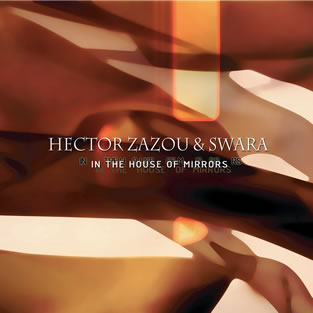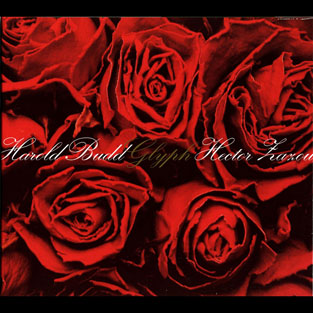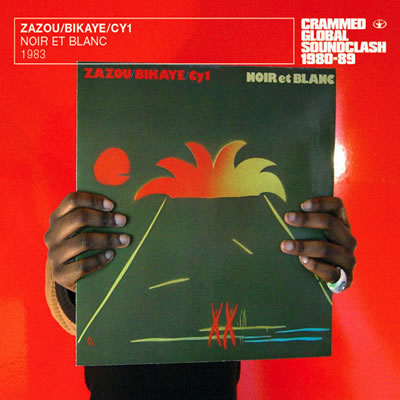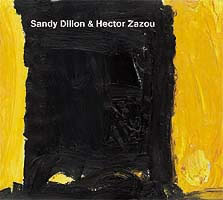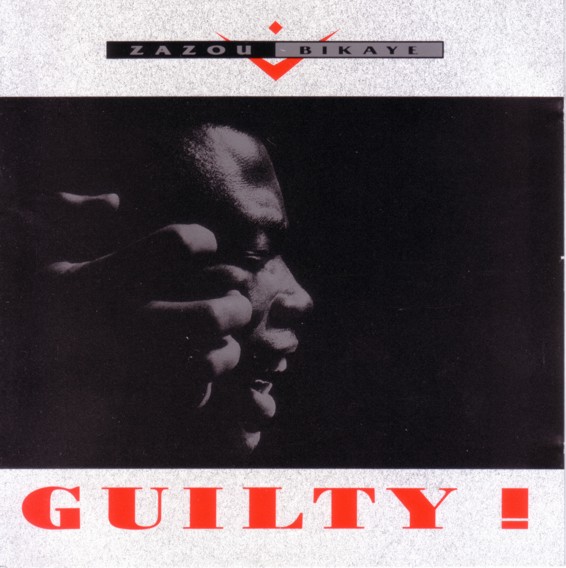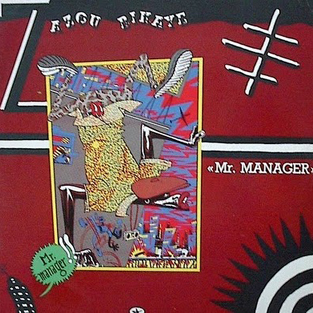
"Geographies (MTM5)"
After the reissue of Made To Measure Vol.1 and before the release of the new album by Nova Materia, we’re pursuing our MTM reactivation campaign with the vinyl reissue of this very special album by the maverick French composer & producer.
Hector Zazou is known for many groundbreaking albums and collaborations, including the Zazou/Bikaye LPs. Yet this orchestral suite originally released in 1985 showcases some of Zazou’s most exquisite compositional work, fusing a chamber ensemble, some classical and pop vocals, unorthodox production, and an ironical, affectionate take on early 20th century classics (think Satie et al). With evocative song titles such as Cine Cittá & Sidi Bel Abbès, and even a catchy folk-like tune (Vera C.), this album is a playful voyage in time and space.
The cover is adorned with a reproduction of a painting by Gérard Garouste who, at the time, was viewed as a vanguard of the neoclassical/postmodernist movement. More about that below.
—
Hector Zazou Geographies — remastered edition — vinyl, CD & digital
out 28 May 2021 on Crammed Discs
—
More on Geographies
Geographies was recorded in Paris between 1982 and 1984, with a group of no less than twenty-five instrumentists and vocalists. Beautifully scored for strings, woodwind, brass, guitar, piano, synth, percussion, sound effects and voices, the nine pieces abound in colorful atmospheres and eerie moments.
The album opens with Cinecittà, a title which might indicate Zazou’s fondness for certain Italian film music composers.
Denise à Venise is reminiscent of the heyday of what is known as mélodies françaises (a genre whose major exponents were the likes of Debussy, Ravel, Satie).
Sidi Bel Abbès, a piece for string quartet and classical vocalists, is an evocation of Hector Zazou’s childhood memories in Algeria.
The album takes a lighter turn with the pop-folk-y Vera C, and its vocals in Spanish, before plunging into mysterious territory with Pali Kao. Does this title refer the eponymous battle which took place in China during the Second Opium War? Or to L’usine de Pali-Kao, an alternative arts centre in Paris, which hosted numerous exhibitions and performances in the early ‘80s? Or more simply to the name of a street in the Belleville neighbourhood, near Zazou’s erstwhile domicile? As it happens, we recently found out that Zazou originally intended to call the piece L’Opéra de Pali Kao, and to subtitle its four sections a) Le jeune matelot, b) Les sirènes, c) Les brumes de Pali Kao, d) Le jour se lève.
The next three tracks, Au bout du monde (‘At the End of the World’), Motel du sud (‘Motel of the South’) and Sous les bougainvilliers (‘Under the bougainvillea’) are mostly instrumental and contain some Zazou’s finest and most poetic compositions and arrangements.
The album proper closes with Des Cocotiers (‘Coconut Trees’), a dreamy track with child-like vocals, vibraphones, strings, flute, bassoon and field recordings.
Geographies is complemented by 13 Proverbes africains (pour quatuor vocal), a collection of thirteen short pieces for classical vocal quartet which were first included in the first CD edition of the album, in the late ‘80s. It’s now available as a digital download via a card included in the vinyl edition. The remastered versions of Geographies and 13 Proverbes africains are also being reissued on CD and digital.
Written by Zazou, the lyrics for 13 Proverbes africains (pour quatuor vocal) are supposedly based on (real or invented) African proverbs. This is probably related to Hector Zazou’s fascination with the work of eccentric French writer Raymond Roussel (1877-1933), whose work exerted a strong influence on many 20th century writers, including the Surrealists, the Oulipo group and nouveau roman writers. One of Roussel’s most famous works is Impressions d’Afrique (‘Impressions of Africa’), a totally imaginary travel adventure story whose underlying structure is completely based on linguistic games and wordplay. Zazou’s interest in the work of Roussel led him to stage a music/visual performance inspired by Roussel’s Impressions d’Afrique, which took place sometime in the late ‘70s at the Centre Pompidou in Paris.
On another note: during Made To Measure’s first decade (’84 to ’94), the back cover of most albums in the series featured a sentence which described what the music had supposedly been created for. “Made to Measure” for such and such film, dance performance etc. As many albums were actually imaginary soundtracks, the artists would come up with their own, often quirky variation on the sentence. Hector Zazou went for “Made to Measure to flesh out the theory of post-modernism”. He felt that, on this album, his approach to chamber music shared a common spirit with the work of certain so-called po-mo, neoclassicalmusicians or painters (such as for example Gérard Garouste), whose declared objective was to become more conscious of the way artists always position themselves in relation to systems of representations rooted in the past. They adopted an attitude which was simultaneously ironic, irreverent and nostalgic in its use of quotations and references. In the three following decades, the term ‘postmodernism’ has obviously been used -positively and negatively- in a wide variety of contexts, so this was just a reminder of what it could have meant for Hector Zazou in 1985…
More on Hector Zazou
Born in Algeria, Hector Zazou’s musical journey started out in Marseille, with one of the most fearsome underground rock bands of the early ’70s, the Barricades collective (which he co-founded). He started recording in the mid-70s with ZNR, the duet he formed with fellow Barricades member Joseph Racaille. Entitled Barricade 3, placed under the dual sign of Erik Satie & Captain Beefheart, ZNR’s debut album remains a revered record which has inspired generations of experimental pop bands (including, recently, the likes of Aquaserge, Julien Gasc & Forever Pavot).
Moving to Paris at the end of the ‘70s, Zazou concocted a couple of provocative projects: the infamous La Perversitá album, and a single which ridiculed president Giscard d’Estaing, who was campaigning for reelection in 1981. At the same time, he was working on experimental and chamber music, released the elegant second ZNR album, performed his compositions with a string quartet, and worked as a journalist (under his real name, Pierre Job) for a large number of French newspapers and magazines.
During the ’80s, Zazou initiated collaborations with Paris-based African musicians and vocalists. This resulted first in the Zazou Wemba 12” single (Malimba), in collaborations with Bony Bikaye and Kanda Bongo Man which eventually became the basis of the Reivax au Bongo album (Made To Measure Vol.2). Then came the celebrated Noir et Blanc album by Zazou Bikaye CY1, the innovative, unsurpassed Afro/electronic milestone which hasn’t aged one bit and remains a arch-cult record to this day. While developing Zazou Bikaye as a band (which toured and recorded two more albums), Zazou pursued his other experimental interests, and released three albums for the Made To Measure series (Geographies, Reivax au Bongo and Geologies).
In the early ‘90s, Hector Zazou started working on concept albums which involved a large number of guests. First the album by Corsican choir Les Nouvelles Polyphonies Corses (which earned him a ‘Victoire de la Musique’ –the French Grammy), then the Arthur Rimbaud tribute album Sahara Blue (with John Cale, Bill Laswell, Khaled, Gérard Depardieu), Songs From The Cold Seas (1994, with Björk, Suzanne Vega, Siouxsie...), Lights In The Dark (1998, with Brendan Perry, Ryuichi Sakamoto, Peter Gabriel…).
Aside from Sahara Blue (which is also part of the Made To Measure series), Zazou’s ambitious concept albums were funded by major companies. Hector Zazou went on to write and/or produce around fifteen other albums, which all earned him a reputation of excellence worldwide.
All in all, he released no less than eleven albums with Crammed the label since the early ‘80s, including his last, posthumous album In The House Of Mirrors, which he recorded with classical musicians from India and Uzbekistan.
Hector Zazou sadly passed away in September 2008, aged 60 years old.
Hector Zazou: a selected discography
ZNR (Zazou-Racaille): Barricade 3 (1976, reissued by ReR Megacorp)
Hector Zazou is known for many groundbreaking albums and collaborations, including the Zazou/Bikaye LPs. Yet this orchestral suite originally released in 1985 showcases some of Zazou’s most exquisite compositional work, fusing a chamber ensemble, some classical and pop vocals, unorthodox production, and an ironical, affectionate take on early 20th century classics (think Satie et al). With evocative song titles such as Cine Cittá & Sidi Bel Abbès, and even a catchy folk-like tune (Vera C.), this album is a playful voyage in time and space.
The cover is adorned with a reproduction of a painting by Gérard Garouste who, at the time, was viewed as a vanguard of the neoclassical/postmodernist movement. More about that below.
—
Hector Zazou Geographies — remastered edition — vinyl, CD & digital
out 28 May 2021 on Crammed Discs
—
More on Geographies
Geographies was recorded in Paris between 1982 and 1984, with a group of no less than twenty-five instrumentists and vocalists. Beautifully scored for strings, woodwind, brass, guitar, piano, synth, percussion, sound effects and voices, the nine pieces abound in colorful atmospheres and eerie moments.
The album opens with Cinecittà, a title which might indicate Zazou’s fondness for certain Italian film music composers.
Denise à Venise is reminiscent of the heyday of what is known as mélodies françaises (a genre whose major exponents were the likes of Debussy, Ravel, Satie).
Sidi Bel Abbès, a piece for string quartet and classical vocalists, is an evocation of Hector Zazou’s childhood memories in Algeria.
The album takes a lighter turn with the pop-folk-y Vera C, and its vocals in Spanish, before plunging into mysterious territory with Pali Kao. Does this title refer the eponymous battle which took place in China during the Second Opium War? Or to L’usine de Pali-Kao, an alternative arts centre in Paris, which hosted numerous exhibitions and performances in the early ‘80s? Or more simply to the name of a street in the Belleville neighbourhood, near Zazou’s erstwhile domicile? As it happens, we recently found out that Zazou originally intended to call the piece L’Opéra de Pali Kao, and to subtitle its four sections a) Le jeune matelot, b) Les sirènes, c) Les brumes de Pali Kao, d) Le jour se lève.
The next three tracks, Au bout du monde (‘At the End of the World’), Motel du sud (‘Motel of the South’) and Sous les bougainvilliers (‘Under the bougainvillea’) are mostly instrumental and contain some Zazou’s finest and most poetic compositions and arrangements.
The album proper closes with Des Cocotiers (‘Coconut Trees’), a dreamy track with child-like vocals, vibraphones, strings, flute, bassoon and field recordings.
Geographies is complemented by 13 Proverbes africains (pour quatuor vocal), a collection of thirteen short pieces for classical vocal quartet which were first included in the first CD edition of the album, in the late ‘80s. It’s now available as a digital download via a card included in the vinyl edition. The remastered versions of Geographies and 13 Proverbes africains are also being reissued on CD and digital.
Written by Zazou, the lyrics for 13 Proverbes africains (pour quatuor vocal) are supposedly based on (real or invented) African proverbs. This is probably related to Hector Zazou’s fascination with the work of eccentric French writer Raymond Roussel (1877-1933), whose work exerted a strong influence on many 20th century writers, including the Surrealists, the Oulipo group and nouveau roman writers. One of Roussel’s most famous works is Impressions d’Afrique (‘Impressions of Africa’), a totally imaginary travel adventure story whose underlying structure is completely based on linguistic games and wordplay. Zazou’s interest in the work of Roussel led him to stage a music/visual performance inspired by Roussel’s Impressions d’Afrique, which took place sometime in the late ‘70s at the Centre Pompidou in Paris.
On another note: during Made To Measure’s first decade (’84 to ’94), the back cover of most albums in the series featured a sentence which described what the music had supposedly been created for. “Made to Measure” for such and such film, dance performance etc. As many albums were actually imaginary soundtracks, the artists would come up with their own, often quirky variation on the sentence. Hector Zazou went for “Made to Measure to flesh out the theory of post-modernism”. He felt that, on this album, his approach to chamber music shared a common spirit with the work of certain so-called po-mo, neoclassicalmusicians or painters (such as for example Gérard Garouste), whose declared objective was to become more conscious of the way artists always position themselves in relation to systems of representations rooted in the past. They adopted an attitude which was simultaneously ironic, irreverent and nostalgic in its use of quotations and references. In the three following decades, the term ‘postmodernism’ has obviously been used -positively and negatively- in a wide variety of contexts, so this was just a reminder of what it could have meant for Hector Zazou in 1985…
More on Hector Zazou
Born in Algeria, Hector Zazou’s musical journey started out in Marseille, with one of the most fearsome underground rock bands of the early ’70s, the Barricades collective (which he co-founded). He started recording in the mid-70s with ZNR, the duet he formed with fellow Barricades member Joseph Racaille. Entitled Barricade 3, placed under the dual sign of Erik Satie & Captain Beefheart, ZNR’s debut album remains a revered record which has inspired generations of experimental pop bands (including, recently, the likes of Aquaserge, Julien Gasc & Forever Pavot).
Moving to Paris at the end of the ‘70s, Zazou concocted a couple of provocative projects: the infamous La Perversitá album, and a single which ridiculed president Giscard d’Estaing, who was campaigning for reelection in 1981. At the same time, he was working on experimental and chamber music, released the elegant second ZNR album, performed his compositions with a string quartet, and worked as a journalist (under his real name, Pierre Job) for a large number of French newspapers and magazines.
During the ’80s, Zazou initiated collaborations with Paris-based African musicians and vocalists. This resulted first in the Zazou Wemba 12” single (Malimba), in collaborations with Bony Bikaye and Kanda Bongo Man which eventually became the basis of the Reivax au Bongo album (Made To Measure Vol.2). Then came the celebrated Noir et Blanc album by Zazou Bikaye CY1, the innovative, unsurpassed Afro/electronic milestone which hasn’t aged one bit and remains a arch-cult record to this day. While developing Zazou Bikaye as a band (which toured and recorded two more albums), Zazou pursued his other experimental interests, and released three albums for the Made To Measure series (Geographies, Reivax au Bongo and Geologies).
In the early ‘90s, Hector Zazou started working on concept albums which involved a large number of guests. First the album by Corsican choir Les Nouvelles Polyphonies Corses (which earned him a ‘Victoire de la Musique’ –the French Grammy), then the Arthur Rimbaud tribute album Sahara Blue (with John Cale, Bill Laswell, Khaled, Gérard Depardieu), Songs From The Cold Seas (1994, with Björk, Suzanne Vega, Siouxsie...), Lights In The Dark (1998, with Brendan Perry, Ryuichi Sakamoto, Peter Gabriel…).
Aside from Sahara Blue (which is also part of the Made To Measure series), Zazou’s ambitious concept albums were funded by major companies. Hector Zazou went on to write and/or produce around fifteen other albums, which all earned him a reputation of excellence worldwide.
All in all, he released no less than eleven albums with Crammed the label since the early ‘80s, including his last, posthumous album In The House Of Mirrors, which he recorded with classical musicians from India and Uzbekistan.
Hector Zazou sadly passed away in September 2008, aged 60 years old.
Hector Zazou: a selected discography
ZNR (Zazou-Racaille): Barricade 3 (1976, reissued by ReR Megacorp)
ZNR : Traité de Mécanique Populaire (Invisible, 1978)
Zazou/Bikaye : Noir et Blanc (Crammed, 1983)
Zazou/Bikaye : Mr. Manager (Crammed, 1985, reissued 2020)
Hector Zazou: Reivax au Bongo (Crammed, 1986)
Hector Zazou: Géologies (Crammed, 1988)
Zazou/Bikaye : Guilty (Crammed, 1988)
Hector Zazou & Les Nouvelles Polyphonies Corses (Universal, 1991)
Hector Zazou : Sahara Blue (Crammed, 1992)
— w/Ryuichi Sakamoto, Gérard Depardieu, John Cale, Tim Simenon, Bill Laswell, Khaled etc
— w/Ryuichi Sakamoto, Gérard Depardieu, John Cale, Tim Simenon, Bill Laswell, Khaled etc
Hector Zazou : Songs From The Cold Seas (Sony, 1995)
— w/Björk, Suzanne Vega, Siouxsie etc
— w/Björk, Suzanne Vega, Siouxsie etc
Hector Zazou & Harold Budd : Glyph (Crammed, 1995)
Barbara Gogan & Hector Zazou: Made On Earth (Crammed, 1997)
Hector Zazou: Lights In The Dark (Warner, 1998)
Hector Zazou & Sandy Dillon: 12(Las Vegas Is Cursed) (Crammed, 2001)
Hector Zazou : Strong Currents (Materiali Sonori, 2003)
— w/Laurie Anderson, Lisa Germano, Jane Birkin etc
— w/Laurie Anderson, Lisa Germano, Jane Birkin etc
Hector Zazou : Corps Electriques (Signature/Radio France, 2008)
— w/Katie Jane Garside, Nils Petter Molvaer etc
— w/Katie Jane Garside, Nils Petter Molvaer etc
Hector Zazou & Swara: In the House of Mirrors (Crammed, 2008)









